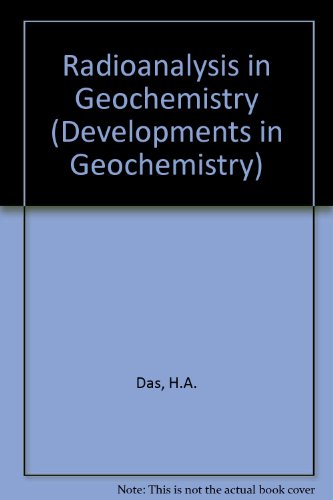Developments in Geochemistry
1 total work
Radioanalysis in Geochemistry
by H A Das, etc., A. Faanhof, and H a Van Der Sloot
Published August 1989
Radioanalysis is indispensable to the present-day geologist and geochemist, due to its three main applications: activation analysis; radiotracer experiments; and the measurement of ``natural'' radioactivity. The aim of this monograph is to summarize that part of the use of radioanalysis which emerges from a confrontation with other analytical methods. After an introductory chapter on the scope of radioanalysis and the aim of the book, Chapter 2 deals with sampling procedures for rocks/minerals, sediments and water. In activation analysis the emphasis is on neutron activation and related prompt methods, with either the nuclear reactor or the neutron generator. The use of the cyclotron and the linear accelerator come into view only when they offer unique or superior results. Distinction is made between the purely instrumental procedures (Chapter 3) and those which imply pre- or post-irradiation separations. Elements are discussed according to the groups of the periodic table. Radiotracer experiments are described, based on mass- and activity-balances. Only those radiotracers which are commonly available are considered.
